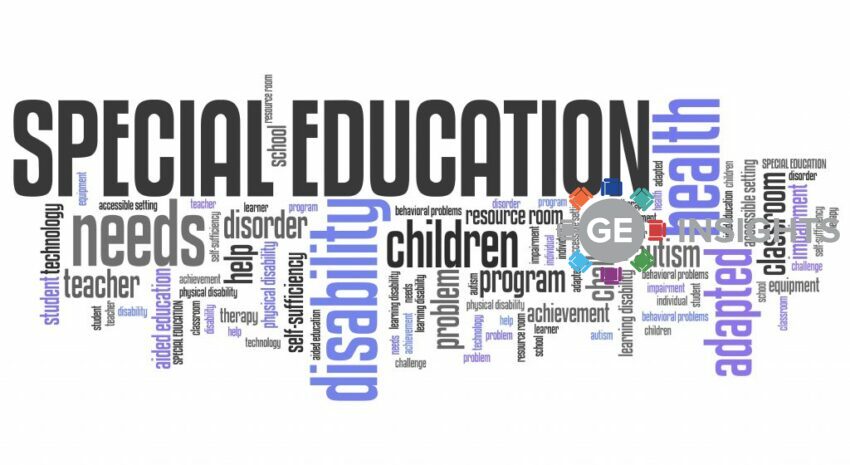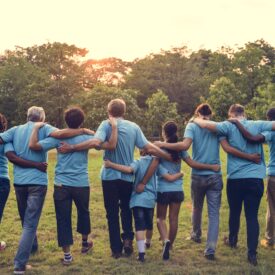In this case study, we look at the work of Jakki Mills and Richard Tunsich of the Insolvency Service, discussing the successes of their employee network group, Break the Stigma, and the work it has undertaken to support employees during the pandemic.
There is no doubt that the situation surrounding Covid -19 has been mentally challenging. Consequently, the conversation surrounding mental health has been brought to the forefront. Break the Stigma (BtS), co-founded by Jakki, with help from colleagues such as Richard, has been working to raise mental health awareness within the Insolvency Service.
The Issue
It was identified that mental health was the biggest cause of long-term staff absence in the insolvency service. This was emphasised by numerous staff complaints, highlighting the lack of recognition they’d received surrounding their mental health conditions. The serving Director recognised the importance of the wellbeing of staff and the direct impact it has on the quality of work they do. Consequently, he asked Jakki to set up a mental health employee network.
The Solution
Jakki and Richard worked with a team of employees, to create the mental health employee network, Break the Stigma. Here are the 6 steps they recommend for creating a strong network:
- Learning from Others. Jakki describes that the first step she took was to learn from other government departments how they had set up their local health awareness groups. She explains how she “quickly realised [she] couldn’t replicate other initiatives completely but instead that there were parts they could adopt.”
- Creating Department Teams. Jakki assembled a group of like-minded individuals to create a steering group, to drive the agenda forward. They also recognised that they would need a communications team and a projects and campaigns team. Both Jakki and Richard stress to me the importance of these teams in developing and communicating the networks message.
- Setting a Mission Statement. Richard took the role of the head of the communications team. He explains that they created a strong mission statement to guide the actions of the network. “Our mission statement was to break the stigma surrounding mental health issues by promoting awareness and providing support for all.”
- Providing Resources. With staff complaints highlighting the lack of recognition and support they’d received surrounding mental health conditions, Jakki knew the importance of providing employees with support resources. The team set up a forum and several Intel intranet pages to provide links to support organisations. This provided a hub of resources that people could read in their own time to learn about mental health and understand how the network was going to support that within the organisation as a whole.
- Executive Leader Sponsorship. Jakki describes how “one of the most important things we did was seek an executive leader sponsor. This enabled us to get our voice heard at an executive level and provide status.”
- Effective Branding. BtS was created as a brand, it had a logo that made it easily identifiable and the team asked all of the members to put a little flag in the corner of their profile pictures to say that they’re a member of BTS. Branding unified the BtS resources, communications and events.

The Outcomes
Break the Stigma has been a great success. Together they have become the largest employee network in the Agency, with over 80 members nationwide. Furthermore, in 2019, BtS were successful in being shortlisted for the Guardian’s Public Service Awards in the Wellbeing category. Jakki and Richard run us through some of their biggest successes:
Mindfulness training and mental health first aid – Jakki and her team successfully lobbied for mindfulness training for the staff to help them build resilience. Consequently, they’ve been able to train 25 Mental Health First Aiders in the last 2.5 years. Mental Health First Aiders are primarily there to support people on an individual basis should they require somebody to talk to about their mental health. However, they’re also there to mid-managers who may be supporting their members of staff with mental health. This has been a really powerful tool in ensuring that the conversation around mental health continues.
Employee assistance advisor - There is now an external employee assistance provider who is available to call 24/7; they can provide counselling or legal advice. There are great benefits to having an external provider as it assures employees they are gaining completely confidential and neutral advice.
Workplace wellbeing – Jakki explains the process they’ve adopted around workplace wellbeing: “What’s one man’s poison is another man’s meat and so there’s no magic silver bullet that can make everything better. So, it’s important to provide different suggestions. We provide a handout with five-minute activities that staff can undertake such as desk yoga, or Joe wicks exercise videos. We highlight how important it is to take breaks, to have five minutes, where you walk away from your desk.” This approach is very topical due to the increased number of people working from home due to the pandemic. Many of us need ways to break up our day and take a step away from our work.
Dedicated work hours for the network – Break the Stigma have received recognition from the TMC director. They have now been given half a day a week to dedicate to the network. Recognition from the director is very important as it signals that mental wellbeing is a company priority.
Kindness project – The Kindness Project has been one of Break the Stigma’s biggest successes. The project has been really quick to excel especially due to COVID as people are feeling increasingly isolated. The project was begun by a member suggesting that BtS could hold a virtual meeting where people can talk about acts of kindness that they’ve given to others or that they’ve received.
Jakki told us how “It was just an hour of pure positivity; it was just beautiful. It was touching some of the stories that were coming up from people, and people from all over the country, all different business areas different grades.”
BtS have continued these sessions with different themes. For example: what has lockdown meant to you, reasons to be cheerful, what makes you happy and what’s keeping us keeping you afloat you’re in lockdown. The kindness project has forged a feeling of togetherness, and it has provided BtS’s members with a sense of community.
The Future
Continuation of good practice – Jakki and Richard explained how the network will continue the success of the Kindness Project: “We have another kindness meeting next month which will be centred around how to deal with the change to winter as we’re getting into the period of the year where some people will be affected by the seasonal affective disorder. It can be a challenging time and this year is going to be even more challenging with the situation surrounding Covid-19. Hopefully, those who attend will be able to take those suggestions away and implement them in their own lives.”
Interaction with external organisations – Richard outlines how they have extended their communications strategy to interact externally: “We are utilising our social media account much more to communicate outside of the company. As an employer, we are telling potential future employees that we are a great company to work for. So, we are improving our interaction with other external organisations, whether that be other government departments or charities.”
Lessons Learnt
Utilise resources that are already out there – Richard highlighted that one thing that enabled the network to become so successful in the first year was utilising resources that were already available. He recommended following the mental health days that were already promoted by charities, such as world mental health day, suicide awareness day and time to talk.
Collaborate with other networks – “Develop a collaborative approach with the other networks, and with your HR department. This made our message so much more powerful.” recounted Jakki. For example, BtS partnered with the Part-Time Workers network because a lot of part-time workers were feeling work guilt, as though they had to be available all of the time, and so we’re increasing their working hours. BtSdeveloped communications and presentations on how to manage part-time workers effectively so they had an effective work-life balance.
Engage through personal stories - Richard told us “It is important to make your communications about people, don’t let your communications just be about the subject, keep it fresh and relatable.” Jakki and Richard explained how they encourage individuals to write blog posts outlining their experiences and coping mechanisms.
Create a brand – As previously mentioned, it is important to create a brand so that your communications have unity. By creating a brand for the network, it becomes an entity in its own right and therefore, it’s not reliant on one individual or a group of individuals.
Executive Leader sponsorship – Both Jakki and Richard highlighted the importance of having somebody in the sphere of influence within your executive or senior leadership team.
Never give up – Richard’s final bit of advice was: “Just keep going. Some things will work well. Some things may not get off the ground but don’t let that put you off.”
Break the Stigma continues to go from strength to strength, connecting people who can “support each other and work with the Insolvency Service to embed mental welling into our culture and policies. Now more than ever we must create a sense of togetherness and support to help our members overcome and manage any troubles they might be facing”.
Additional Resources
Sources:
[1] MGC Interview with Jakki Mills, Co-founder Break the Stigma, and Richard Tunsich, Break the Stigma team member, Insolvency Service
Register FREE to access 2 more articles
We hope you’ve enjoyed your first article on GE Insights. To access 2 more articles for free, register now to join the Government Events community.
(Use discount code CPWR50)




